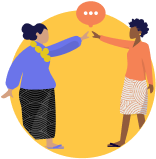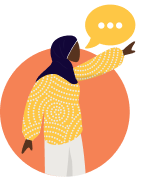When Survivors Lead: A Global Conversation...
May 28, 2019
Story

Dayanara
United States of America
Joined Sep 9, 2010
I became an Executive Director in 2004 with just the experience of running programs and shadowing my supervisor. Being the Executive Director put me on the frontline of not just leading an entire organization, but having my own personal story of violence be at the forefront of my leadership as well. This required me to go through my healing's best and worst parts in front of my staff, my co-workers, and the community I worked for and with.
I had no idea when I took on leadershipthat my healing journey was going to be very important. I would soon learn that leading is not just about what you are doing, but also who you are being, what you are thinking about yourself, and what you think you deserve.
I found that the more I supervised staff and supported them in their healing my own story ofbeing adopted, going through child sexual abuse and domestic violence, or anything else I’d experienced early on in my life had anything to do with how I was leading and being a leader. It wasn't that I was oppressive or violent. It was something much more dangerous than that.
Despite the fact that my community saw me as a powerful organizer and healer, somewhere inside of me I’d internalized that no one loved me. I believed that every time someone left the organization they were in fact leaving me. I believed that every time something went wrong or a participant didn't return, it was my fault, and that when we didn't get that grant, the loss was well deserved because nothing I did was good enough anyway.
I didn't know that in order to fight for justice out in the world I would first need to find justice for the violence I had experienced in my own life.I didn't realize that as an Executive Director, I also needed safe spaces and healing spaces. I needed sisterhood and community, spirituality and faith, politics and feminism. I had to forgive myself and others.
I’m aware now more than ever that when we co-exist in work places and homes and communities with people who have the same story of trauma and violence, the impactis far greater than anystory of trauma and violence we come to the work with already.
As I worked with more and more women I became more and more convinced that the trauma of violence isat the center of how we show up in leadership.Yet, it is difficult to get women on the front linesto disclose their stories and break the silence. We are trained that we must have boundaries and hold our personal lives confidential.In movements and communities we are afraid to share our stories because the community is too small and people will gossip. Most of the violence that occurs in social change is swept under the rug for fear of breaking confidentiality, or having no systems in place to hold accountability.
So what happens when we work in organizations that perpetuate the same ills we’re trying to dismantle? Where are the safe spaces for women survivors and victims to do their own healing?
I would love to know if this is a global experience?
Do survivorsin Nigeria, Peru, etc who lead organizations and social movements experiencing the same things?
What would a safe space of healing and leadership look like for survivors and victims in your country look like?
How has your experience with violence shaped you as a leader?
From one survivor to the next and In BOLD Leadership DEE



